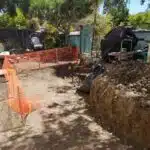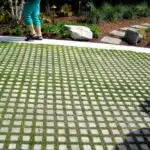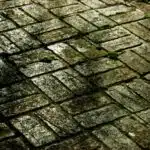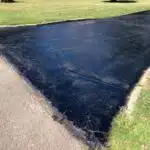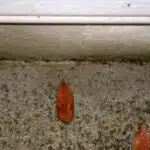Flagstone patios are a popular addition to many outdoor living spaces. These natural stone surfaces provide a rustic and natural appeal that blends seamlessly with the surrounding environment. However, laying a flagstone patio can be a challenging task that requires careful planning and execution.
In this article, we will discuss the steps involved in laying a flagstone patio. From choosing the right materials to preparing the foundation and laying the stones, we will cover all aspects of this project. Whether you are an experienced DIYer or new to outdoor construction work, our guide will provide you with valuable insights to help you create a beautiful and functional flagstone patio for your home. So, let’s get started!
Choosing The Right Location
A flagstone patio is a beautiful addition to any outdoor space, providing a natural and rustic feel. However, before beginning construction, it is important to choose the right location for the patio. Design elements such as the shape and size of the patio, as well as its proximity to other features in your yard, should be taken into consideration. Additionally, environmental considerations such as sun exposure and drainage must also be evaluated.
When choosing a location for your flagstone patio, it is important to consider your design goals. The shape and size of your patio will largely depend on how you plan to use the space. If you plan on entertaining guests, you may want a larger area with plenty of seating options. Alternatively, if you are looking for a quiet retreat in your backyard, a smaller more intimate space may be more suitable.
Another important consideration when selecting a location for your flagstone patio is environmental factors such as sun exposure and drainage. Choose an area that receives adequate sunlight throughout the day if you plan on using it frequently during daylight hours. It is also essential to ensure proper drainage by selecting an area that naturally slopes away from your home or installing proper drainage systems if necessary.
After selecting the ideal location for your flagstone patio based on design elements and environmental considerations, measuring and marking the area will be next in line. This involves determining the exact dimensions of your desired patio area and ensuring that it complements existing landscaping features while adhering to local regulations.
Measuring And Marking The Area
After choosing the right location for your flagstone patio, the next step is to measure and mark the area accurately. Measuring accuracy is essential as it will determine the amount of materials you need to purchase. Using professional tools such as a measuring tape, a level, and a chalk line can help ensure that measurements are precise.
Before measuring the area, remove any grass or debris to create a level surface. Start by taking measurements of the length and width of the area using a measuring tape. Once you have determined these dimensions, use a level to ensure that the ground is even throughout. This will prevent any uneven spots on your patio that could cause tripping hazards.
To mark off the area, use a chalk line to create straight lines around the perimeter of your patio space. This is an easy way to visualize where your flagstone pieces will be placed. Additionally, marking off areas where any cuts may need to be made can save time during installation.
In summary, ensuring accurate measurements and using professional tools such as a measuring tape, level, and chalk line are crucial steps in preparing for your flagstone patio installation. By taking these steps, you can ensure that your patio is level and has clean lines for easy installation. With this step completed, it’s time to gather materials and tools needed for laying down your flagstones.
Gathering Materials And Tools
Choosing the Right Stones is a crucial first step when planning to lay a flagstone patio. It is important to select stones that are uniform in thickness and size, as this will make installation easier and ensure a level surface. Additionally, you’ll want to consider the color and texture of the stones so that they match your outdoor aesthetic.
Essential Tools are necessary for any successful patio project. Some of the most important tools include a shovel, rake, tamper, level, saw, and safety gear. These tools will help you excavate the site properly, level the ground, cut stones to size if needed, and ensure your own safety while working.
Before starting any work on your patio project, it is essential to gather all necessary materials and tools. Choosing the Right Stones and Essential Tools will make completing your project easier and more efficient. With these items at hand, you’ll be ready to move on to excavating the site in preparation for laying your new flagstone patio.
Excavating The Site
After gathering all the necessary materials and tools, the next step in laying a flagstone patio is to excavate the site. Excavation safety should always be a top priority in any outdoor construction project, so it’s important to take the necessary precautions before digging. Before starting, make sure to contact local utility companies to ensure that there are no underground wires or pipes in the area. Additionally, wear appropriate safety gear such as gloves, boots, and eye protection.
Once excavation safety measures have been taken care of, it’s time to start digging. The depth of your excavation will depend on several factors, including the thickness of your chosen flagstones and whether you plan on adding a layer of sand or gravel beneath them. As you dig, use a level to ensure that your excavation is even throughout the entire patio area. It’s also important to manage excess soil by either disposing of it properly or using it for landscaping elsewhere in your yard.
In addition to excavation safety and managing excess soil, another important consideration during this stage is drainage. Make sure that your excavation has a slight slope away from any nearby structures to prevent water from pooling on your patio surface. Once you’ve finished digging and leveling your excavation area, you’re ready to move onto the next step: preparing the base for your flagstone patio.
Preparing The Base
As the saying goes, “a firm foundation is the key to success.” This principle applies to flagstone patio installation as well. Before laying the stones, it’s important to prepare a stable base that will prevent shifting and settling over time. The first step in preparing the base is to compact the soil thoroughly. Use a plate compactor or a hand tamper to pack down the soil until it’s firm and even. This will create a solid surface for your patio.
Once you’ve compacted the soil, it’s time to level the surface. A level surface is essential for ensuring that your patio sits evenly and looks great. Start by placing stakes at each corner of your planned patio area, then run a string between them at ground level. Use a long board or screed to smooth out any high spots and fill in any low areas with additional soil or sand. Be sure to check your work frequently with a level to ensure that you’re getting an even surface.
Compacting soil and leveling surfaces may sound like simple tasks, but they are crucial steps in creating a durable and attractive flagstone patio. Take your time during this phase of the project, as any mistakes made here can cause problems down the line. Once you’ve created a solid, even base, you’ll be ready to move on to installing the edging, which we’ll cover in our next section.
Installing The Edging
One of the essential elements in laying a flagstone patio is installing the edging. The purpose of edging is to contain the stones and prevent them from shifting or spreading apart over time. Choosing suitable edging materials is crucial to ensure that they complement the aesthetic appeal of the patio and provide lasting durability.
When selecting an edging material, consider its compatibility with your landscaping design and climate. Some popular options include plastic, metal, brick, stone, and concrete. Plastic is an affordable option that comes in various colors and styles but may not be as durable as other materials. Metal edging can be more expensive but offers excellent flexibility and strength. Meanwhile, stone or concrete edging provides a natural look that blends well with garden landscapes.
Once you have chosen your preferred edging material, it’s time to install it around the patio perimeter. Start by measuring the length and width of the area where you want to install the edging. Then use a shovel to dig a trench about six inches deep along the perimeter of your patio area, making sure it’s level throughout. Finally, place your selected edging material into the trench carefully and secure it in place using spikes or stakes.
Now that you have installed your chosen edging material around your patio perimeter, you are ready to add a weed barrier. A weed barrier helps prevent unwanted vegetation from growing through gaps between stones while allowing water drainage and air circulation beneath them. In addition, adding a weed barrier also helps maintain the visual appeal of your flagstone patio for years to come.
Adding A Weed Barrier
After installing the edging, the next step in laying a flagstone patio is to add a weed barrier. This step is crucial in preventing weeds from growing in between the stones, which can cause damage and make maintenance more difficult. There are different types of barriers that can be used, such as landscape fabric or plastic sheeting.
One of the benefits of weed prevention is that it helps to maintain the integrity of your patio. Weeds can grow through small cracks and crevices in the stone, causing them to shift and become uneven over time. By adding a barrier, you can ensure that your patio remains level and stable for years to come. Additionally, weed prevention makes maintenance easier because there will be less plant matter to remove from between the stones.
When choosing a weed barrier for your flagstone patio, it’s important to consider factors such as durability and permeability. Landscape fabric is a popular choice because it allows water and nutrients to pass through while blocking sunlight from reaching weeds. Plastic sheeting may also be effective but can be more prone to tearing or breaking down over time. Whichever option you choose, make sure to lay it down evenly and securely before moving on to the next step of mixing and pouring the mortar.
Mixing And Pouring The Mortar
A successful flagstone patio installation requires a sturdy foundation, which is why mixing and pouring the mortar correctly is crucial. The first step to creating a strong mortar mix is selecting the right ingredients. The most common type of mortar used for flagstone patios is a mixture of Portland cement, sand, and water. However, it’s important to note that different regions may require different types of sand or cement to achieve optimal results.
Mixing techniques are also critical in producing a high-quality mortar mix. Start by combining the dry ingredients into a mixing tray or bucket, then slowly add water while continuously mixing until the desired consistency is reached. A good rule of thumb is to aim for a thick peanut butter-like consistency that will hold its shape when molded. Avoid adding too much water as this can weaken the durability of the mortar.
Mortar consistency plays an important role in ensuring your flagstone patio lasts for years to come. An overly wet mixture will cause stones to shift and move over time, leading to cracks and uneven surfaces. On the other hand, if the mixture is too dry, it won’t adhere well enough to create a solid base for your stones. By following proper mixing techniques and achieving optimal consistency, you’ll be able to create a stable foundation for laying your flagstones in the next step.
Laying The Flagstones
When it comes to laying flagstones for your patio, choosing the right pattern is crucial. There are numerous flagstone patterns that you can choose from, and each one of them can give your patio a unique look. The most popular patterns include random, repeating, and herringbone patterns. You can also mix different size stones or colors to create an even more distinctive look.
Once you have decided on the pattern for your flagstone patio, it’s time to start grouting. Grouting is an essential part of laying flagstones as it helps keep the stones in place and prevents any movement. There are two primary grouting techniques: wet grouting and dry grouting. Wet grouting involves mixing mortar with water until it reaches a paste-like consistency and then spreading it between the flagstones using a trowel. On the other hand, dry grouting involves brushing sand into the gaps between the stones.
When laying flagstones, cutting and shaping stones is a necessary skill that you will need to master. Cutting allows you to customize stones to fit specific areas of your patio while shaping lets you create curves or rounded edges instead of square shapes for a more natural look. To cut stone accurately, use a chisel or saw blade designed for cutting stone materials. Shaping requires more advanced tools such as angle grinders or stone-cutting machines that allow for more precise cuts.
By following these tips on laying flagstones for your patio project, you can achieve a beautiful outdoor space that will last for years to come. In our next section, we’ll take a closer look at cutting and shaping stones – an essential step in creating a stunning flagstone patio design that stands out from the rest!
Cutting And Shaping Stones
Laying the flagstones is only half the battle when it comes to creating a beautiful and functional patio. The other half involves cutting and shaping stones to fit the layout of your design. This may seem like a daunting task, but with the right tools and techniques, it can be accomplished with ease.
Before you start cutting and shaping your stones, it’s important to select the right type of stone for your patio. There are many different options available, each with their own unique characteristics and benefits. Some popular choices include sandstone, limestone, slate, and granite. Consider factors such as durability, color, texture, and thickness when making your selection.
Once you have selected the perfect stones for your patio design, it’s time to start cutting and shaping them into place. There are a variety of tools that can be used for this process including a hammer and chisel or a wet saw. It’s important to take accurate measurements before cutting any stones and always wear protective gear such as safety glasses and gloves.
To make your patio look its best, consider incorporating design options such as curves or patterns into your layout. This will add visual interest to your space while also providing functional areas for seating or dining. Once all of your stones have been cut and shaped into place, it’s time to fill in the gaps with grout. This will help ensure that your patio is level and stable while also adding an extra layer of protection against weathering over time.
Filling The Gaps With Grout
After setting all the flagstones in place, it’s time to fill in the gaps with grout. Grout is a mixture of cement, sand, and water that helps secure the stones in place while also providing an attractive finish. There are several grout color options available, so choose one that complements the stones and overall style of your patio.
Before applying grout, ensure that all debris and dust have been cleared from the flagstone surface. Use a broom or blower to sweep away any remaining dirt. Next, mix the grout according to manufacturer instructions and apply it evenly between each stone using a trowel. Tips for applying grout evenly include working in small sections at a time and using a rubber float to smooth out any bumps or inconsistencies.
Once you’ve finished applying the grout, allow it to dry completely before walking on the patio or placing furniture on top of it. This usually takes about 24 hours but can vary depending on weather conditions and humidity levels. After drying, use a wet sponge to wipe away any excess grout residue left on the stones’ surface. The final step is sealing the patio to protect against stains and moisture damage.
Transition: Now that we’ve covered how to fill in gaps with grout, let’s move onto the next important step of sealing your newly installed flagstone patio.
Sealing The Patio
Sealing the Patio: Benefits of Sealing and Choosing Sealant
Now that your flagstone patio is set, it’s time to think about sealing it. Sealing your patio has many benefits. Firstly, it helps protect the stone from moisture and stains. Without sealant, water can seep into the pores of the stone, causing damage over time. Sealant also helps prevent oil and other substances from staining the stone surface, making for easier maintenance.
When choosing a sealant, there are several options available on the market. One option is a penetrating sealer that seeps into the pores of the stone and protects from within. This type of sealant is best suited for natural stones like flagstone as it allows for breathability while still providing protection against water damage and stains. Another option is a topical sealer that sits on top of the stone surface, forming a protective layer. This type of sealant provides more shine than a penetrating sealer but may require more maintenance in terms of reapplication.
Sealing your patio is an important step in ensuring its longevity and beauty. Take care in choosing your sealant based on your specific needs and preferences to get the most out of your investment. In our next section, we’ll discuss adding finishing touches to complete your beautiful new outdoor space without compromising its durability or safety.
Adding Finishing Touches
Once your flagstone patio is complete, it’s time to add those finishing touches that will make it truly unique. There are many design options available to enhance the look of your patio. One popular option is to use accent lighting to highlight certain areas or features. You can also consider adding plants or decorative elements such as a water feature or fire pit.
Another important aspect of maintaining your flagstone patio is keeping it clean and free of debris. Regular sweeping and occasional power washing can help prevent dirt and grime buildup, which can cause the stones to become discolored over time. It’s also a good idea to seal the stones every few years to protect them from the elements and keep them looking their best.
It’s important to remember that while flagstone patios are beautiful and durable, they do require some maintenance to keep them in top condition. By following these maintenance tips and exploring different design options, you can create a stunning outdoor living space that you’ll enjoy for years to come. In the next section, we’ll cover some specific steps you can take to maintain your flagstone patio and ensure its longevity.
Maintaining Your Flagstone Patio
- Flagstone patios are a popular choice of outdoor flooring, due to the aesthetic appeal and natural materials used in its construction.
- To maintain a flagstone patio, it is important to regularly clean it to prevent mold, moss and other contaminants from staining the surface.
- Additionally, it is also important to seal the flagstone patio to protect it from the weather and preserve its natural look.
- When cleaning and sealing, it is important to use the appropriate materials and products to ensure the longevity of the patio.
Cleaning
Cleaning is an essential step in maintaining your flagstone patio. Whether you choose to tackle the task yourself or hire a professional, there are important considerations to keep in mind. DIY cleaning can save money, but it also requires more time and effort on your part. On the other hand, hiring a professional can ensure a thorough job and save you time, but it will come at a higher cost.
If you decide to clean your flagstone patio yourself, there are eco-friendly cleaning solutions that can be used instead of harsh chemicals that may harm the environment. These solutions include using vinegar and water or baking soda and water for light stains. For tougher stains such as oil or grease, you can use dish soap mixed with warm water. Be sure to rinse thoroughly with water afterwards to remove any remaining residue.
Alternatively, if you prefer to hire a professional for your cleaning needs, they will have access to specialized equipment and cleaning products that are not available for DIY cleaning. They will also have extensive knowledge in identifying particular stains and how best to remove them without damaging the stone. Hiring a professional may be more costly than doing it yourself, but it guarantees a thorough job done right the first time around.
In conclusion, maintaining your flagstone patio through regular cleaning is crucial for its longevity and aesthetic appeal. Whether you choose to do it yourself or hire a professional, using eco-friendly cleaning solutions should be considered as an option for preserving both your patio and the environment surrounding it.
Sealing
After cleaning your flagstone patio, the next step in maintaining it is sealing. Sealing your patio provides protection against stains, moisture damage, and natural weathering. It also enhances the color and texture of the stone. However, there are both benefits and drawbacks to sealing your flagstone patio.
The benefits of sealing include increased durability and longevity of the stone, preventing cracking or chipping due to freeze-thaw cycles, and minimizing mold or mildew growth. It also makes future cleaning easier as sealed surfaces repel water and resist staining from spills. On the other hand, sealing may alter the appearance of the stone by creating a glossy or unnatural finish that some homeowners may not prefer. Additionally, over-sealing can cause discoloration or flaking of the stone.
To determine whether your flagstone patio needs to be sealed and how often it should be done depends on several factors such as climate, usage frequency, and type of sealant used. Consulting with a professional landscaper or outdoor construction expert can help you make an informed decision about when and how to seal your flagstone patio to ensure its optimal condition for years to come.
Troubleshooting Common Issues
Common mistakes can occur during the installation of a flagstone patio. One of the most common errors is not properly preparing the base. A stable and level base is essential for a long-lasting patio. Skipping this step can cause uneven settling, resulting in a wobbly surface that will need frequent repairs.
Another mistake is not using enough sand between the stones. This can cause them to shift or settle over time, creating an unattractive and unsafe surface. To prevent this issue, make sure to use enough sand to provide a stable base for each stone. Additionally, be sure to sweep excess sand off the surface as you go so that it doesn’t interfere with the final look of your patio.
Preventive measures can help avoid common issues with flagstone patios. To ensure a successful installation, take the time to plan out your design and layout before beginning work. Use proper tools and equipment, including a sturdy wheelbarrow, shovel, level, and rubber mallet. And always wear appropriate safety gear such as gloves and protective eyewear.
In summary, taking preventive measures during installation can help avoid common mistakes with laying a flagstone patio. Proper preparation of the base is critical for stability over time. Using enough sand between stones and sweeping away excess sand will also contribute to a more attractive and secure final product. By following these tips and taking care during installation, you’ll be able to enjoy your new patio for years to come without worrying about costly repairs or maintenance issues down the line.
Conclusion
Creating a flagstone patio is a great way to enhance the beauty of your outdoor space. By following the steps outlined in this article, you can create a stunning patio that will withstand the test of time. Remember to choose the right location for your patio and measure and mark the area carefully before digging. Gather all necessary materials and tools, including gravel, sand, and flagstones.
Excavate the site, prepare the base with layers of gravel and sand, and seal the patio for added durability. Finally, add finishing touches such as planting around the edges of your patio or adding decorative lighting fixtures. With proper maintenance and troubleshooting techniques, you can enjoy your flagstone patio for years to come. Always remember that creating a beautiful outdoor space takes time and effort but with patience and dedication you can achieve amazing results!
Image Credits
- “Flagstone Patio Design” by Madjag (featured)

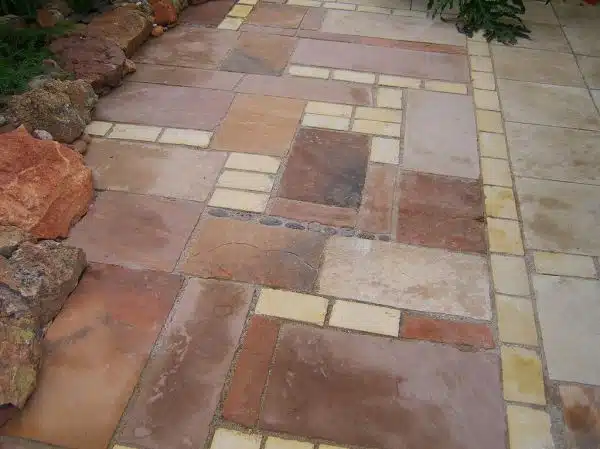

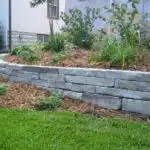

![Calculating How Much Stone Dust You Need 5 [Blog Post]Stone Dust © Oxfam Australia](https://green-life.blog/wp-content/uploads/2023/05/GdZVzgTqPhjq-150x150.jpg.webp)





